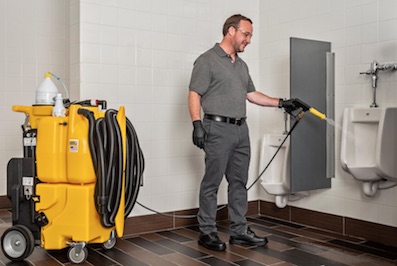 Cleanzine: your weekly cleaning and hygiene industry newsletter 3rd July 2025 Issue no. 1169
Cleanzine: your weekly cleaning and hygiene industry newsletter 3rd July 2025 Issue no. 1169
Your industry news - first
The original and best - for over 20 years!
We strongly recommend viewing Cleanzine full size in your web browser. Click our masthead above to visit our website version.
Why we must regularly clean around urinals
 A study published in Emerging Infectious Diseases reports that traces of the pathogens which cause Coronavirus can be found in an infected person's urine.
A study published in Emerging Infectious Diseases reports that traces of the pathogens which cause Coronavirus can be found in an infected person's urine.
Further, another study, published by scientists from China's Yangzhou University, finds that when urinals are used by people infected with the virus, traces of Coronavirus can become airborne when the urinal is flushed.
In the process, the pathogens can be inhaled by others in the restroom.
While the researchers did not conclude that this will spread the disease, they indicted the potential is there.
Key findings of their study were:
* Within 5.5 seconds after flushing a urinal, airborne droplets are released potentially spreading the Coronavirus.
* During this period, about 60% of the droplets generated by the flush have traveled past the urinals' exterior.
* Within this period, droplets reach a height of approximately 3ft.
* The droplets form a trajectory, initially pointing directly at the urinal user.
* After six seconds, the airborne particulates travel higher, coating walls, partitions, and other surfaces around the urinal.
"Even if the droplets do not contain traces of the virus, they still may contain germs and bacteria that can be dangerous if inhaled or touched," says Matt Morison of Kaivac, developer of cleaning equipment engineered to fight the spread of infection.
Aware of this, the China News Service reports that staff members at some of China's international airports are now spraying disinfectant liquids on the walls above, sides, and below urinals to help eliminate any pathogens on the walls.
"This type of cleaning and disinfecting should not be performed manually,” adds Matt. “That's too slow and requires touching contaminated surfaces.
"Instead, using what ISSA calls ‘spray-and-vac’ (no-touch cleaning) systems will do the job faster, and will certainly be safer for the cleaning worker."
25th March 2021







